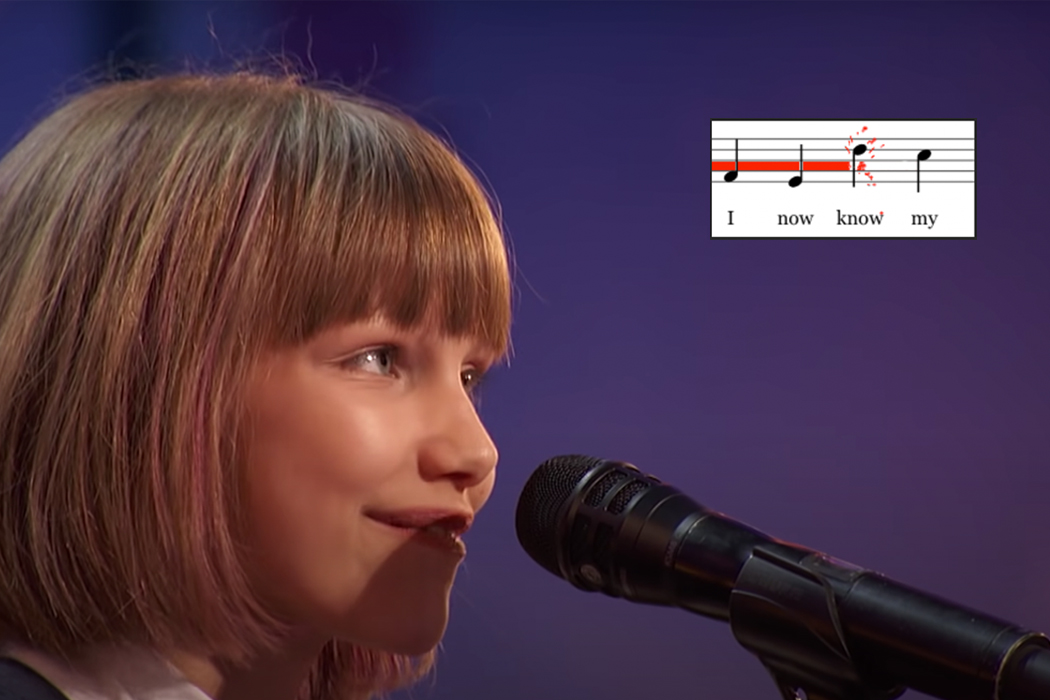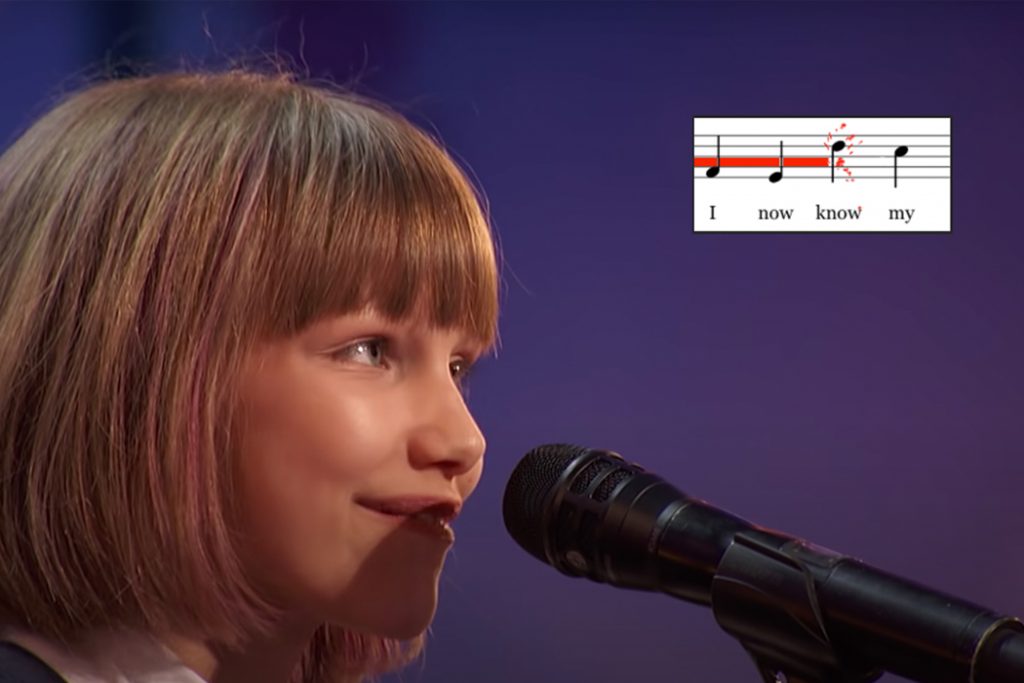
+ Recording and mixing your vocals at home? Grammy-winning artist Kimbra explores how to harness the full creative potential of your music in her new course!
Remember 12-year-old Grace VanderWaal on America’s Got Talent?
Sure you do.
Give me a minute. I’m a sucker for that kind of thing.
Okay.
I’m not the only one. A friend of mine said she cries at 2:03, every time, and she wanted to know why. First the obvious: Adorable munchkin who has apparently seen Juno 20 times sings about not knowing who she is, then suddenly belts out, “I now know my name!”
Dead. I’m dead.
But as usual, it’s not just the words. In the hands of a good songwriter, the music intensifies the meaning of the words. Yeah, the tempo picks up and she sings louder at that spot, but there’s something else there.
Over the course of the short song, she creates a kind of pitch “ceiling” — then breaks through it at the perfect time.
Listen to the A♭’s (in red below). She keeps hitting that note over and over and doesn’t go above it for most of the song:

The repetition creates a really tangible boundary, you might not realize it at first but it’s firmly established. Listen between 1:16 – 1:32 (in the above video).
…Then her breakthrough in the lyric is mirrored with a breakthrough in the music, and the crowd responds instantly, right at 2:02.

That one moment, a moment of vocal release and reach, was the difference between polite applause and the audience leaping to its feet.
Simon Cowell’s “you’re the next Taylor Swift” comment was a bit much. But if Grace does happen to make it big, she’ll be able to trace her success back to a single well-placed D♭.
Don’t stop here!
Continue learning with hundreds of lessons on songwriting, composing, home recording, electronic production, beat making, and much more. Explore Soundfly’s exciting courses like Modern Pop Vocal Production, Modern Mix Techniques, and of course, Kimbra: Vocal Creativity, Arranging, and Production.
—
Dale McGowan has one foot in arts, the other in sciences, and the other in nonreligious life. He double-majored in music and evolutionary anthropology at UC Berkeley, then studied film scoring at UCLA before conducting a college orchestra while earning a Ph.D. in Composition from the University of Minnesota. Dale is managing editor of nonreligious writers at Patheos, the world’s largest website for multi-belief opinion. He teaches music at Oglethorpe University, is at work on a book about how music communicates emotion, and hosts the How Music Does That podcast.




